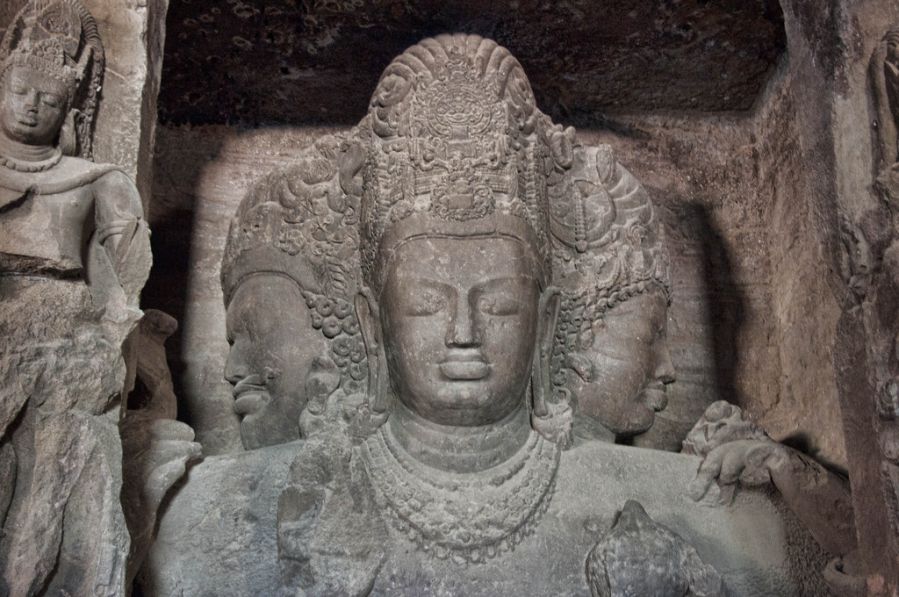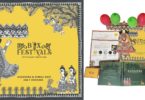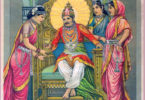Bhavna sat restlessly on the wooden bench in her classroom, feet hanging in mid-air; she was shorter than most of her classmates. Her black school shoes were one size too short and her feet hurt. Had she not been sitting in the first row; the shoes would have been kicked off by now. Post-recess, her heart was still in the playground outside. The school was unusually silent; probably, everyone was feeling lazy in the October heat. A crow was cawing relentlessly outside the classroom window. Her teacher did not sound very different from the crow. She was cawing relentlessly about some caves on an island near Mumbai. Out of nowhere, the teacher asked, “What is an island?”. Tensely, Bhavna straightened up to answer. Thankfully, the question was directed at her friend Komal; who got up with a mischievous smile and drew an “eye” on the black-board. The class guffawed. Surprisingly, the teacher, Ms. Malati was smiling too. She said, “We should go to the caves for a picnic”. Suddenly, everyone was wide-awake.
Bhavna’s mother came back home after a long back-breaking day at work, as a house-maid. Despite their humble circumstances, she ensured that their home was always clean and beautiful. Their steel utensils shone with like silver and were arranged neatly on a rack. Her mother and grand-mother had made beautiful bedsheets from old saris. The floor was a spotless mirror. Bhavna chattered about the impending picnic and the huge statue of Trimurti. Her mother said, “We have a Dattatreya temple in the lane next door. Why go all the way and make this expense? Is it a jagrut place of worship?”. Looking at her disappointed face, her mother said, “You can go”. Her grandmother said, “Take a coconut and some flowers to offer there”. The teacher had not said anything about praying. Indeed, why should one go to such a place?
Early next morning, their neighbor, Asha auntie, was drawing a beautiful rangoli outside her home. It was her daily ritual. Auntie said that the caves had mostly broken statues, and that no one prayed there. It did not make sense to go. Much to horror of Bhavna, auntie’s son added gleefully, that, the place was full of bats and smelt of bat droppings.
Back at school, Komal’s eyes popped out when she heard of bats. She said, “I hope they are not blood-sucking bats!”. Before Bhavna could reply, they noticed that Ms. Malati had overheard their conversation. The teacher said, “Bats do not suck blood. In fact, they stay away from humans. Do not worry; the school will not take you to an unsafe place”. Drawing some courage, Bhavna asked, “But why should we see these caves? It is not a temple”. “Because it is a beautiful and rare piece of art”, came the reply. Now, Bhavna and Komal were completely confused. Ms. Malati taught history and geography. Why was she taking about Arts? Arts was taught by Ms. Raman, who rarely came to the class. To confuse them further, the teacher added with a smile, “Bhavna, why do you wear these pretty earrings? Why do we decorate the school for the annual day? Why do you draw rangoli and decorate the pandal for Ganeshotsav?” After the teacher left, Komal said morosely, “I don’t understand what this teacher says. We might fail in her class this year”. Bhavna completely agreed with her friend.
But, it set her mind ticking. What use was a rangoli? Would Lord Ganesh mind if there were no decorations? As for her earrings, they made her look very pretty; all her friends said so. At least, she had an answer to that question. If, Ms. Malati would ask these questions in the exams, she could pass.
The picnic day finally arrived. Her mother packed pohe for her, gave her a water-bottle and some money. It was a hot day and to the surprise of all students they boarded a boat to go to the Elephanta Islands. Quietly, Komal had fathomed the meaning of the word island.
It was a hot day, the sun shone brightly on the sea, and the waves looked silver rather than blue. This was her first time in a boat, and at the end of the one-hour journey, Bhavna felt motion-sick. They should have listened to the teacher and not eaten anything before boarding the boat. Controlling her motion sickness, she gingerly stepped-off the boat. Ms. Raman was taking the attendance for the third time today. She didn’t seem to be pleased with the picnic. Nor did she seem excited to see “the pinnacle of rock sculpture”, described in their school books. Ms. Raman was very stingy while giving grades. As per a school legend, she had given a B+ once in her life. “Guess what grade would she give to the artists of this cave?”, someone sniggered.
Bhavna, herself was feeling skeptical. As they trekked up to the caves, her water was almost over, and her black shoes were burning hot in the sun and bit her feet. She had thought of removing them, but that would mean that, she had to walk on the burning hot rocks. As the queued up outside the cave, she could smell its dampness. Komal spotted a few bats and clutched her hand in fear. Ms. Malati seemed to be the only happy and excited soul. She chirped that the Trimurti was larger than Lalbaug cha Raja Ganesh statue. The caves were more than a thousand years old, and so on, and so forth. Exasperated and disappointed, Bhavna said, “If they are so good, why is the queue so short? At Lalbaug, you have to stand in a queue for 24 hours to see the statue”. Ms. Malati must have heard her, she did not speak much after that. But, as they entered the cave, she smiled reassuringly at the students.
After the bright sun, outside, the caves seemed dark and Bhavna could hardly see. The queue slowed down. The motion-sickness and heat had taken some toll on Bhavna. She concentrated on the floor and tread carefully. Komal nudged her and she looked-up.
In front of them stood the grandest statue that they had ever seen. Grand, serene and eerily beautiful. The chattering students had gone silent. The calm and damp breeze in the cave cooled her down. She stood awestruck. She could not take her eyes off the Trimurti. Bhavna had found her answers.
Legend:
Dattatreya: A Hindu God who is an incarnation of the Divine Trinity Brahma (creator), Vishnu(protector) and Siva (destroyer).
Ganesh/ Ganapati: A popular and beloved Hindu God, He is believed to be a patron of knowledge, arts and wisdom.
Ganeshotsav: A festival celebrated in western and southern part of India, in honor of Lord Ganesh.
A Jagrut place of worship: A Hindu belief that the deity/God resides at that place.
Lalbaug cha Raja: a famous Ganesh idol kept at Lalbaug in Mumbai, during Ganeshotsav
Pandal: A temporary structure erected during festivals like Ganeshotsav, where people gather to celebrate.
Pohe: A popular breakfast dish prepared from flattened rice, in western part of India.
Rangoli: Traditional decoration made from rice flour drawn on floor, usually, near the entrance of a home.
Trimurti: The three-faced statue of Lord Shiva, a Hindu God. In this form, he is worshipped as the divine trinity of creator, protector and destroyer.
—
This story was submitted as part of the #StoriesInArt blogging competition. Read other shortlisted entries here.





